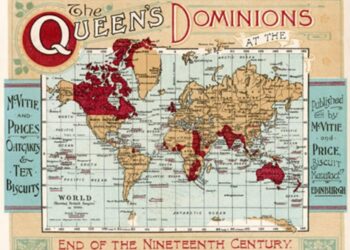Mudit Vyas
The uncritical amplification of Pat Cummins’ 50k donation betrays a glib insincerity
On January 9th 2021, an Indian cricketer, Mohammed Siraj, was racially abused at the SCG. Not unexpectedly, and quite appreciably, the Australian cricket media came out in unequivocal support of the young athlete. It was refreshing to see the media at large recognise that their sport had a racism problem. This multicultural longing for a post-racial sport is quite conditional though in Australia. Especially conditional on how entrenched the subject of the media’s critique is in positions of power. This conditional approach to social justice became quite apparent recently at the ongoing Indian Premier League in India.
Let us unpack this. Let us start with the recognition that the sport of cricket and the Australian society at large have a racism problem. Australian men’s cricket is a white sport. Australian cricket media is even more white. Australia has a significant south Asian population; close to 3% as per the last census; and yet nobody in the media made the connection that maybe our racism lies more in the fact that in our 150+ years-old cricketing history, we have had just 1 person of south Asian origin play international cricket for Australia – Usman Khawaja. Our audience has no investment in people of colour as their idols. Wouldn’t it have been more prudent of the media to say that we have no South Asian representation in the sport or in the sport’s media, and maybe that is more the reason for the audience’s xenophobic attitude towards touring players of colour.
This appeal to see this as a structural problem is also a desperate plea for more cultural nuance in sports reportage. Representation in sports in Australia is a multi-faceted subject. Cricbuzz, in a bid to introduce a little cultural diversity into the sports media in Australia, recently relocated an Indian journalist, Bharat Sunderesan, from India to cover Australian cricket. Which is, again, appreciable in the face of it. Till you consider the apparent fact that Australian cricket media had to literally import a talent of colour because they don’t have a culture of nurturing talents of colour within their ranks, despite having had a significant south Asian population for quite a few decades now.
Now the imported journalist, in the face of the racism row at the SCG, performed admirably for the white audience he was catering to. He even recounted instances of annoyingly common racist conduct he had been at the receiving end of in his brief stay here. Everyone patted themselves on the back and moved on with their non-representative opinion pieces on the series with India and the then upcoming IPL.
No Australian journalist will possibly be able to honestly deny the fact that a lot of their freelance work’s audience is in India. Some journalists even stoop to hilariously problematic cultural appropriation to build this audience. What this lays ground for is a type casting of the “Indian” community as a monolith. And Brahmin men like Bharat Sunderesan get to represent it in the media. Brahmins, as a caste-group, make up less than 3% of India’s population. They are abominably over-represented though in all facets of the public sphere, cricket and cricket media included, in India and especially in the diaspora.
So, when it is these “multicultural” sports journalists that the Australian media takes their cue from for their reporting, we end up with a situation where there is no nuance in anything they interpret as Indian. Where this invocation of R Ashwin, another Brahmin man, as an “admirable family man” by the imported journalist of colour becomes a sycophantic dog whistle. It gives the larger public a different message. Explicitly, it portrays the journalist as a man appreciating his subject (Ashwin) as a brave figure for forgoing the riches of the IPL in favour of his personal safety. Implicitly though, it signals to the IPL administration that this is pretty much all we are going to do to question the morality of a league that is now increasingly looking like a drain on public resources (police and health infra especially) amongst other issues. These journalists don’t critique their eventual revenue generator by design. It is intentional. Ashwin is a multi-millionaire cricketer who has the choice of being safe. Amplifying it as a “bold move” by the Australian media is a sign of something more sinister.
This something more sinister manifested recently in the way the uncritical junketing around Pat Cummins donating $50,000 to the Indian PM-Cares fund played out. White sports media journalists in Australia represented this as a gesture of magnanimity. Meanwhile, the IPL as a tournament, went ahead unquestioned. This is typical of white journalists though in their portrayal of white saviours. If you go and look up today’s coverage on Twitter around the IPL, it is still majorly just a documentation of how white players in the league are manoeuvring in terms of their participation in the rest of the league. This manoeuvring is being presented to us as a bold outspoken act. While the league itself has no challenge being presented to its continuance from this media that draws a big chunk of its revenue from the IPL-pie. The Indian cricket board, whose secretary is the son of India’s Home Minister has been put through no cross-examination.
The PM-Cares fund that Cummins donated to has been repeatedly found ethically wanting in its purpose, intent and accountability by Indian investigative media. It has been associated with corrupt practices and the Indian PM himself has proclaimed it above public oversight. This begets a simple inference that may be Pat Cummins just has a smart agent who suggested this donation to him as a PR tactic. That this is probably just a nod to the powers that be. And that all this fawning over his generosity by the media is not just cringe-worthy, it sets the ethical bar dangerously low for the Australian cricket media.
Indian-Australians, frankly, will appreciate even a simple recognition from the cricket media here that Pat Cummins’ PM Cares donation was a calculated BCCI-appeasing move and not anything that would make an actual difference. Till they recognise this entrenchment of Australian players and Australian media with the Indian cricketing establishment, they have lost our trust as fans, followers and audience.
I will re-iterate this though – their implausible portrayal of Cummins as a generous and norm-defying white-saviour is not done out of ignorance. It is by design. Australia has close to no South Asian representation in the sport of cricket. The existing active representation that they do have is equally entrenched in caste privilege. A phenomenon they have no nuanced understanding of. Time and again, the Indian community in Australian has made efforts to engage with the cricket media here only to be left frustrated in the face of an aversion to understanding south Asian culture and its nuances. This has consequently brought us to question the intent of a prodigious athlete like Pat Cummins in donating to a fund that has no ethical standing. Australia’s self-proclaimed multicultural sports media is gradually divorcing itself from the material reality of an audience that they so desperately suck up to on their digital channels.
Mudit Vyas
Mudit is a graduate research student at Monash University. He studies representation in creative industries like the media and sports.
The views and opinions expressed in this article are those of the authors and do not necessarily reflect the editorial views or position of NRI Affairs.
Follow NRI Affairs on Facebook, Twitter and Youtube.











